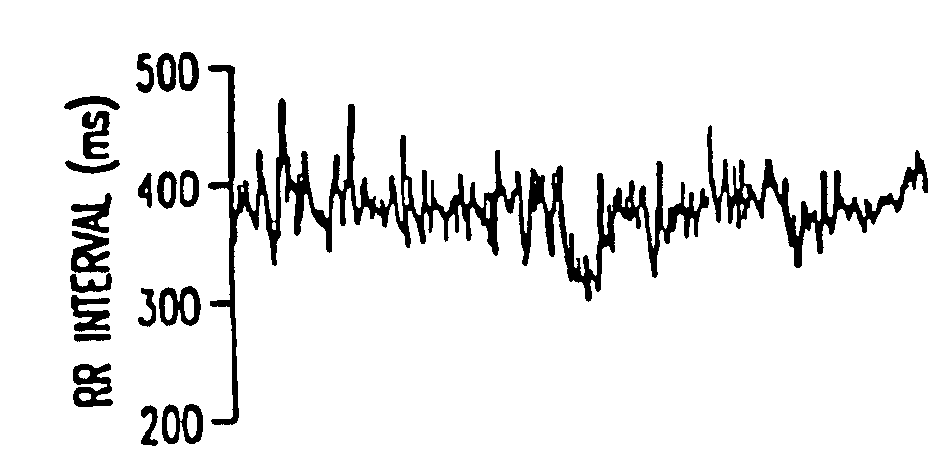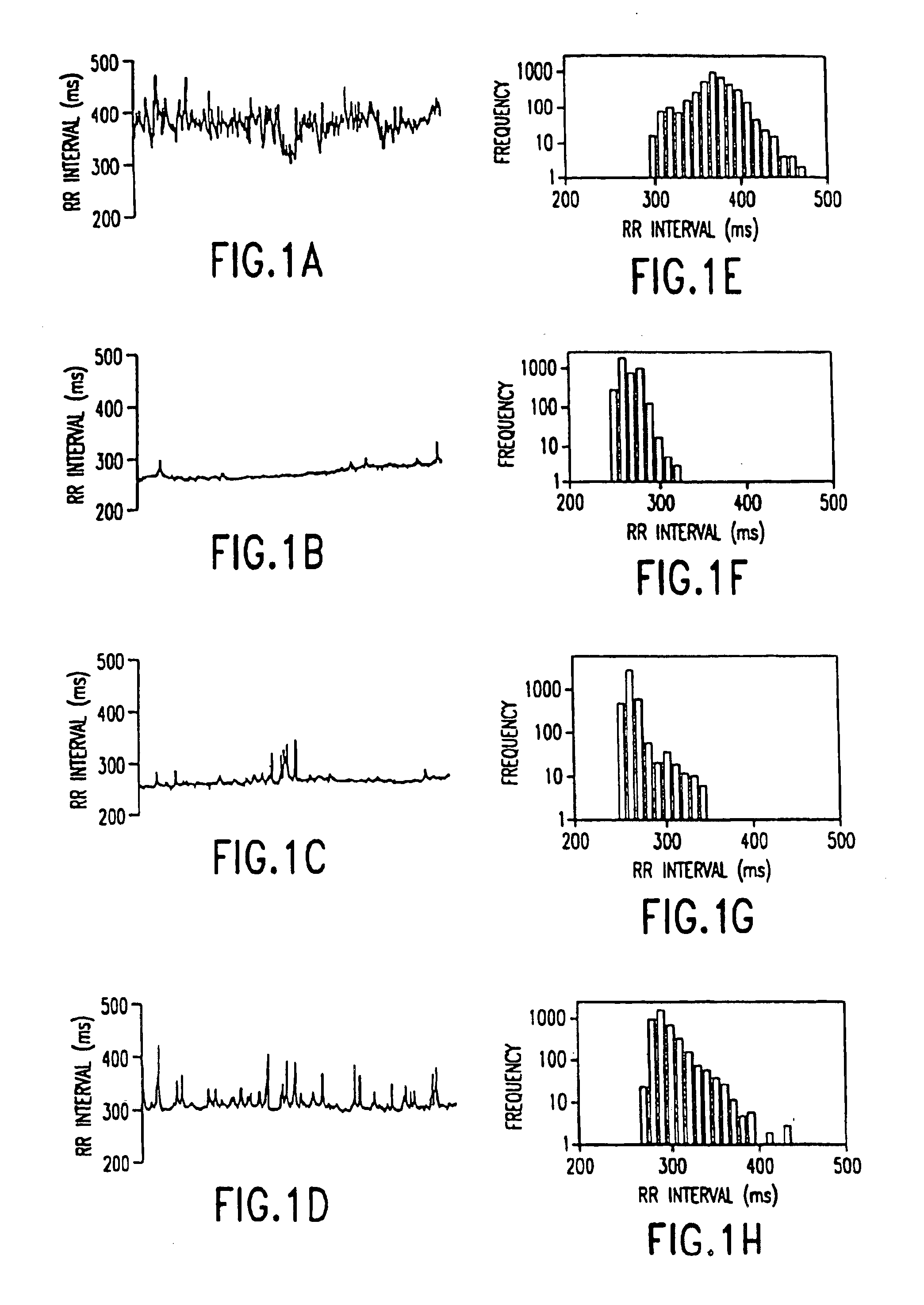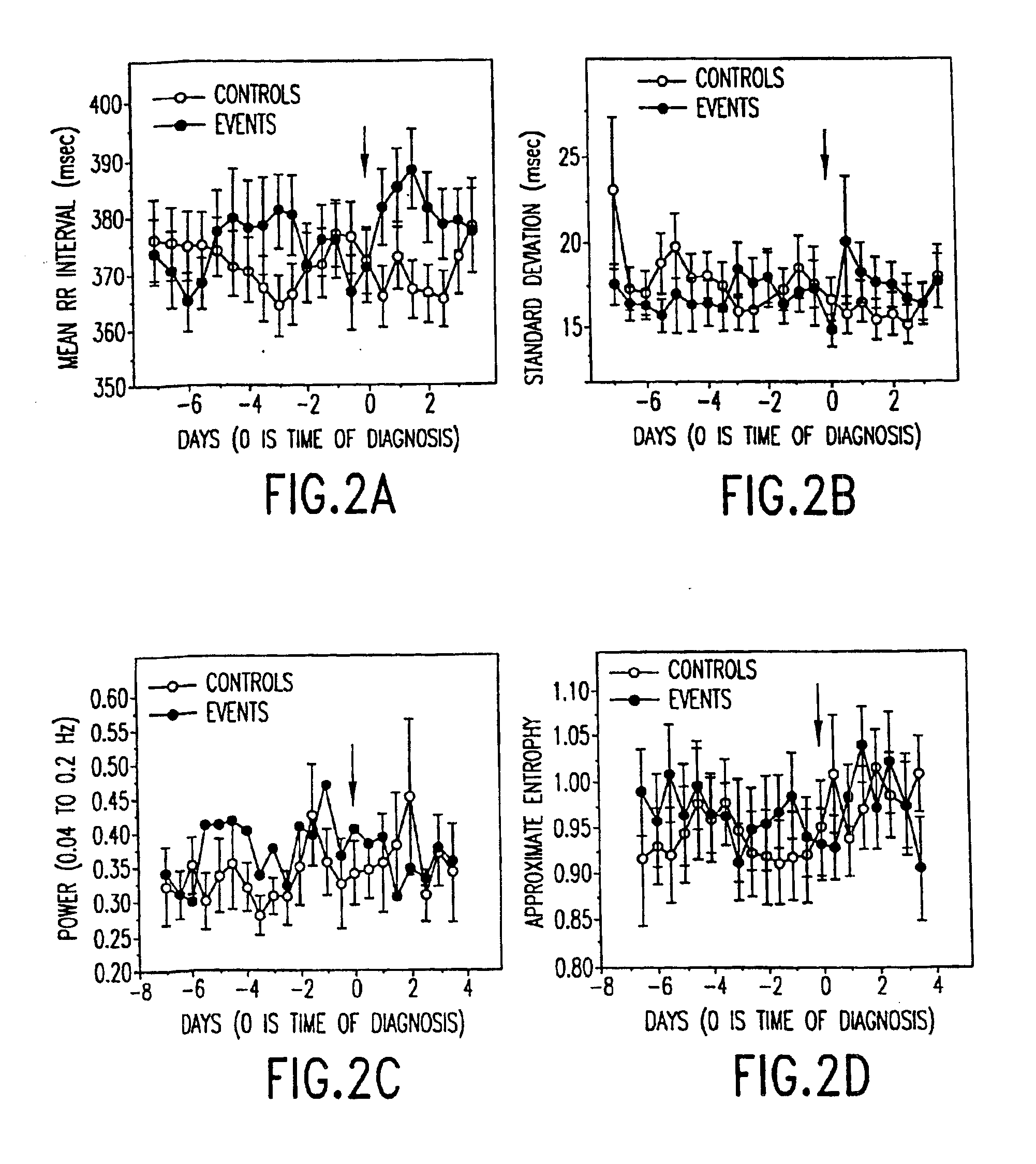Method for the early diagnosis of subacute, potentially catastrophic illness
a potentially catastrophic illness and early diagnosis technology, applied in the field of early diagnosis of potentially catastrophic illnesses, can solve the problems of increasing the risk of catastrophic infectious illness, morbidity and mortality, and infected infants have a significant increase in the number of days spent on ventilators, so as to achieve the effect of monitoring heart rate variability and large data sets
- Summary
- Abstract
- Description
- Claims
- Application Information
AI Technical Summary
Problems solved by technology
Method used
Image
Examples
example 1
Neonatal infants in the NICU who were at risk for developing late-onset sepsis or necrotizing enterocolitis were studied. Infants were selected for monitoring if they were low birth weight, premature, likely to need central venous access, and likely to remain in the NICU for longer than two weeks. The infants were assigned to 1 of 2 groups as follows: “control” infants had no clinical suspicion of illness or cultures obtained; “event” infants had a positive blood culture with clinical illness or necrotizing enterocolitis. Late-onset sepsis was defined as one or more positive blood cultures obtained after 72 hours of age with clinical signs and symptoms suggestive of infection including apnea and bradycardia, the need for increased respiratory support, or feeding intolerance. Blood cultures were obtained at the discretion of the infants' physicians. The timing and results of blood cultures were obtained from the microbiology report and confirmed with the bedside record. NEC was diagn...
example 2
Both HRV and clinical illness severity in 45 NICU infants who were clinically stable was measured. Clinical illness severity was determined using the previously validated Score for Acute Neonatal Physiology (SNAP and SNAP-PE). Richardson, D. K., J. E. Gray, M. C. McCormick, K. Workman, and D. A. Goldmann. 1993. “Score for Neonatal Acute Physiology: a physiologic severity index for neonatal intensive care.”Pediatrics 91:617-623. Richardson, D. K., C. S. Phibbs, J. E. Gray, M. C. McCormick, K. Workman-Daniels, and D. A. Goldmann. 1993. “Birth weight and illness severity: independent predictors of neonatal mortality.”Pediatrics 91:969-975. Neonatal Therapeutic Intervention Scoring System (NTISS) was also used. Gray, J. E., D. K. Richardson, M. C. McCormick, K. Workman-Daniels, and D. A. Goldmann. 1992. “Neonatal therapeutic intervention scoring system: a therapy-based severity of illness index.”Pediatrics 90:561-567. The first assigns points for hemodynamic and laboratory abnormalities...
example 3
To test the correlation of HRV and clinical score in a large group of patients, heart rate and HRV, measured in two ways (the coefficient of variation, a time-domain measure and the power from 0.02 to 0.2 equivalent Hz, a frequency domain measure) and were plotted as a function of the clinical score. It was found that there was an inverse correlation for HRV and illness severity: HRV is lower in the sicker infants (those with higher clinical scores.) FIG. 5, panels A, B, and C support this finding. Panel A is a plot of mean heart rate as a function of clinical score. This figure demonstrates that there is no significant correlation between heart rate and clinical score (r=−0.14, p=0.31). These results were somewhat surprising, as many clinicians would have expected heart rate to rise in the sicker infants. Panels B and C show plots of HRV, represented by coefficient of variation (“CV”)(standard deviation divided by the mean) and by the power from 0.02 to 0.2 Hz of a moving window of...
PUM
 Login to View More
Login to View More Abstract
Description
Claims
Application Information
 Login to View More
Login to View More - R&D
- Intellectual Property
- Life Sciences
- Materials
- Tech Scout
- Unparalleled Data Quality
- Higher Quality Content
- 60% Fewer Hallucinations
Browse by: Latest US Patents, China's latest patents, Technical Efficacy Thesaurus, Application Domain, Technology Topic, Popular Technical Reports.
© 2025 PatSnap. All rights reserved.Legal|Privacy policy|Modern Slavery Act Transparency Statement|Sitemap|About US| Contact US: help@patsnap.com



